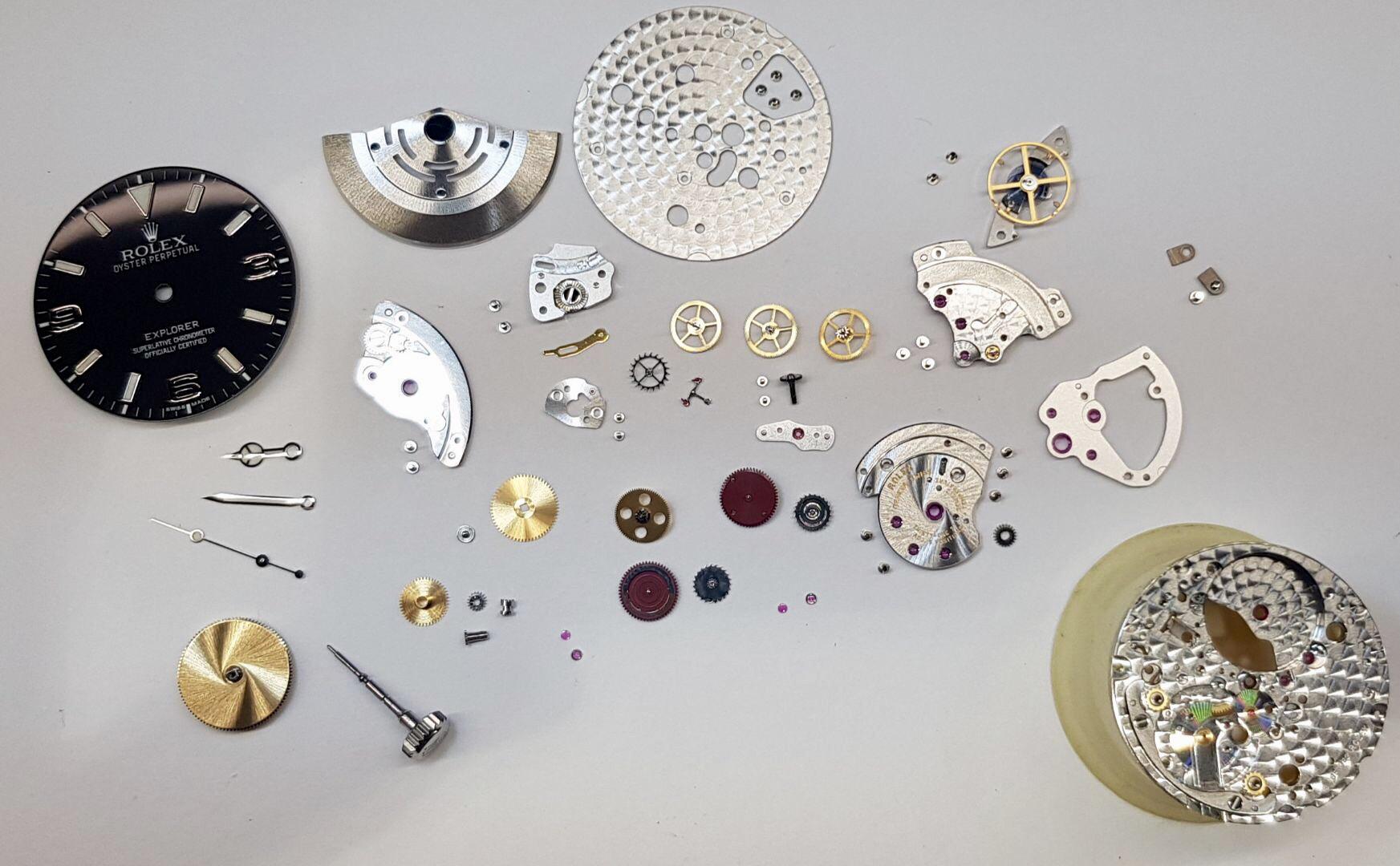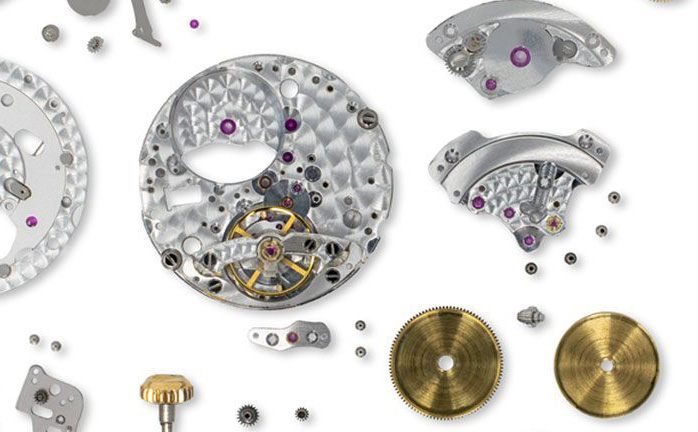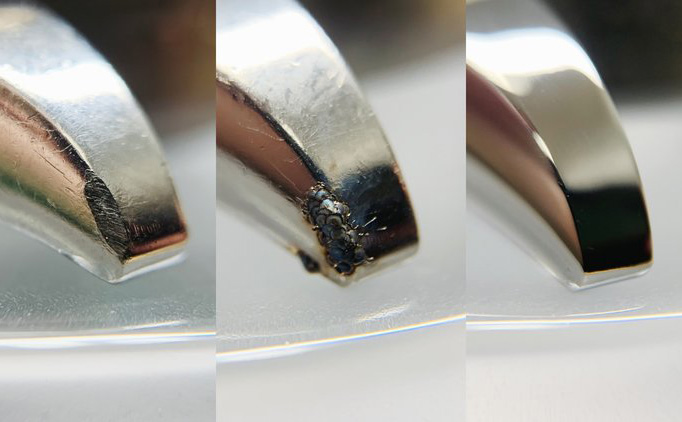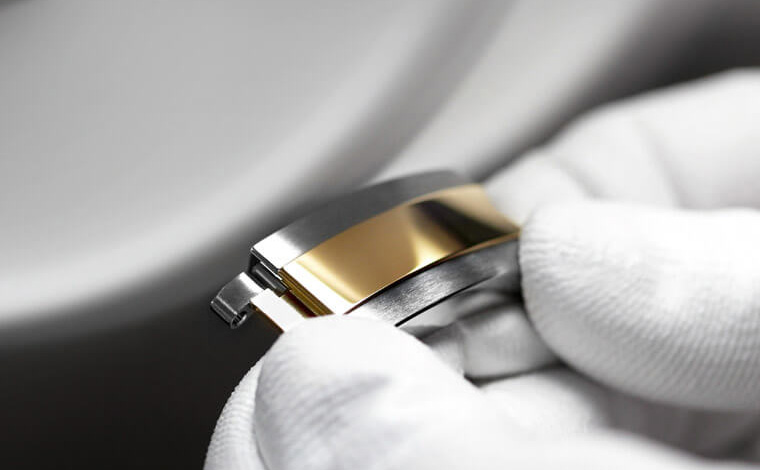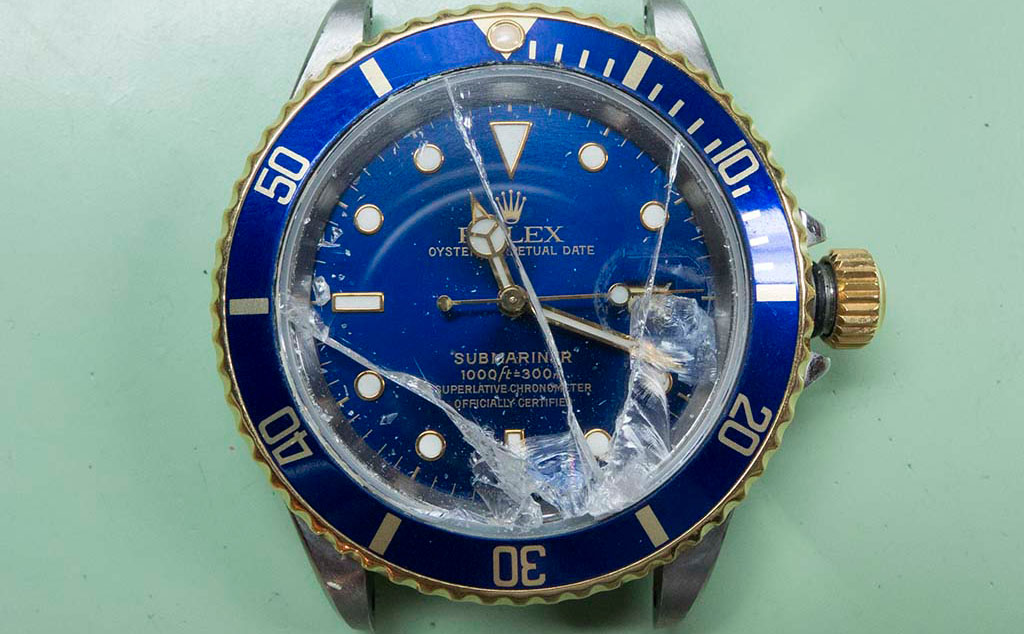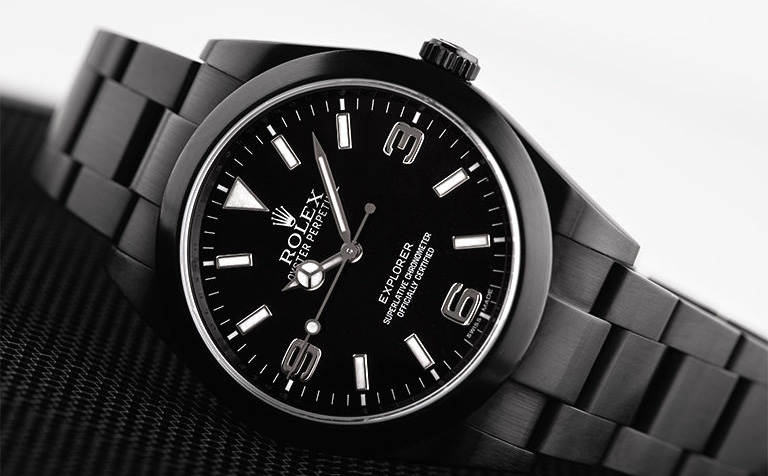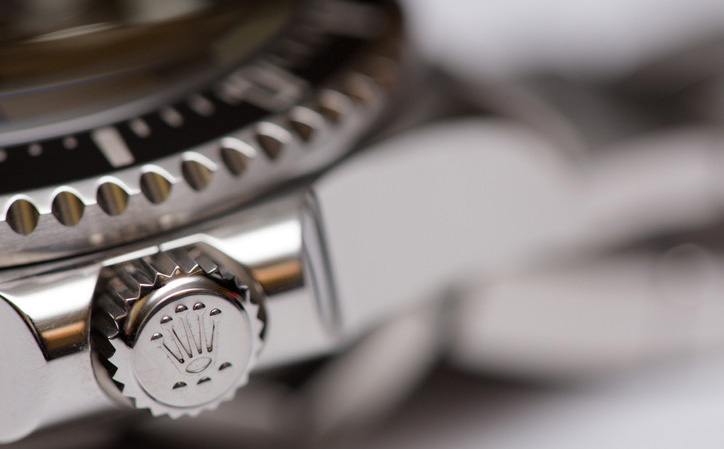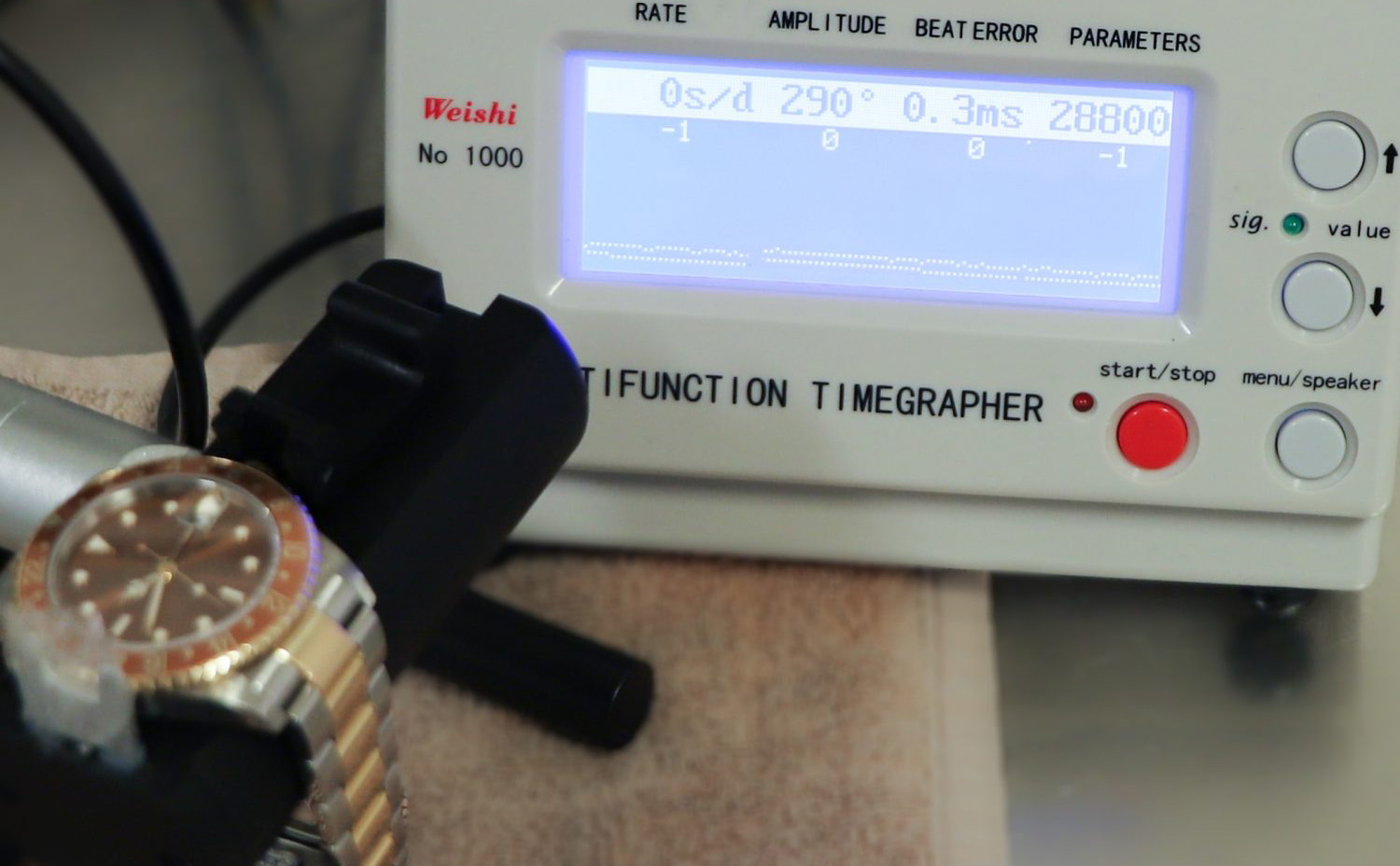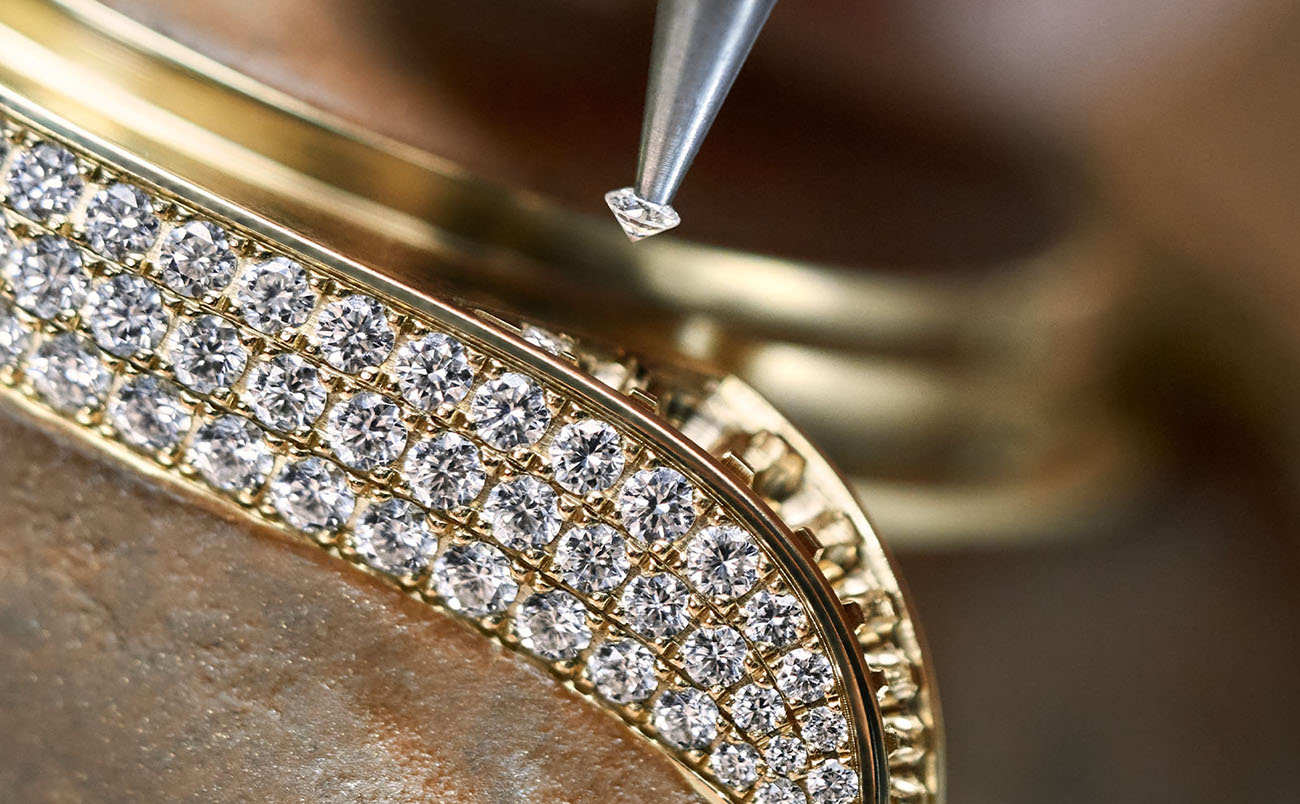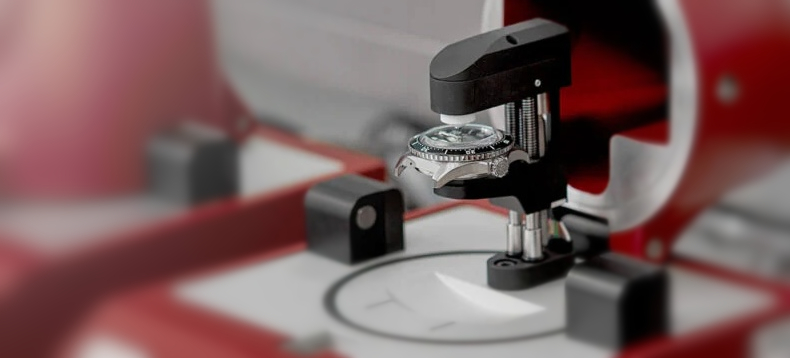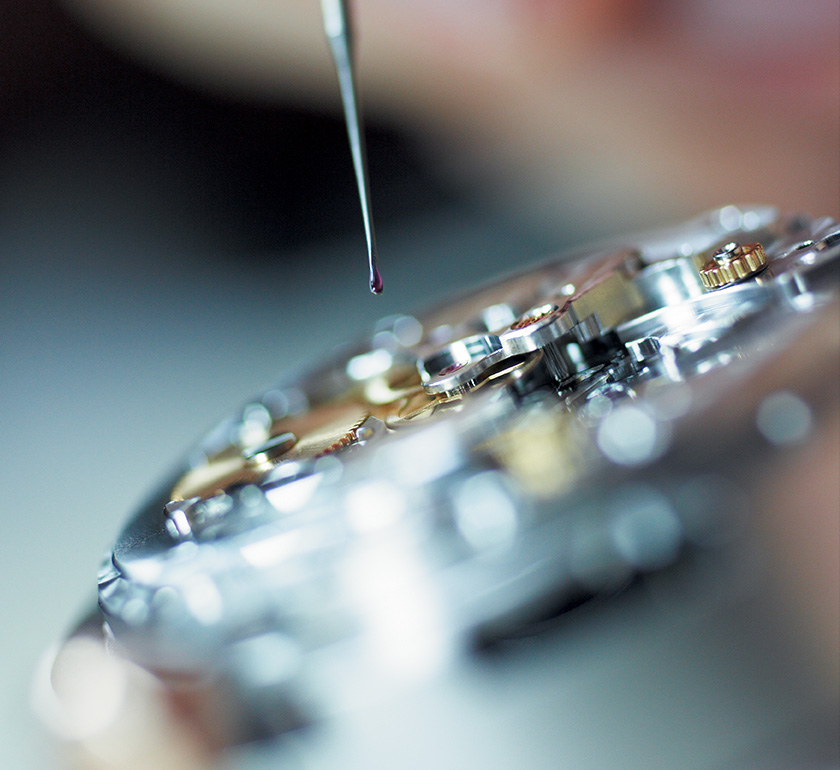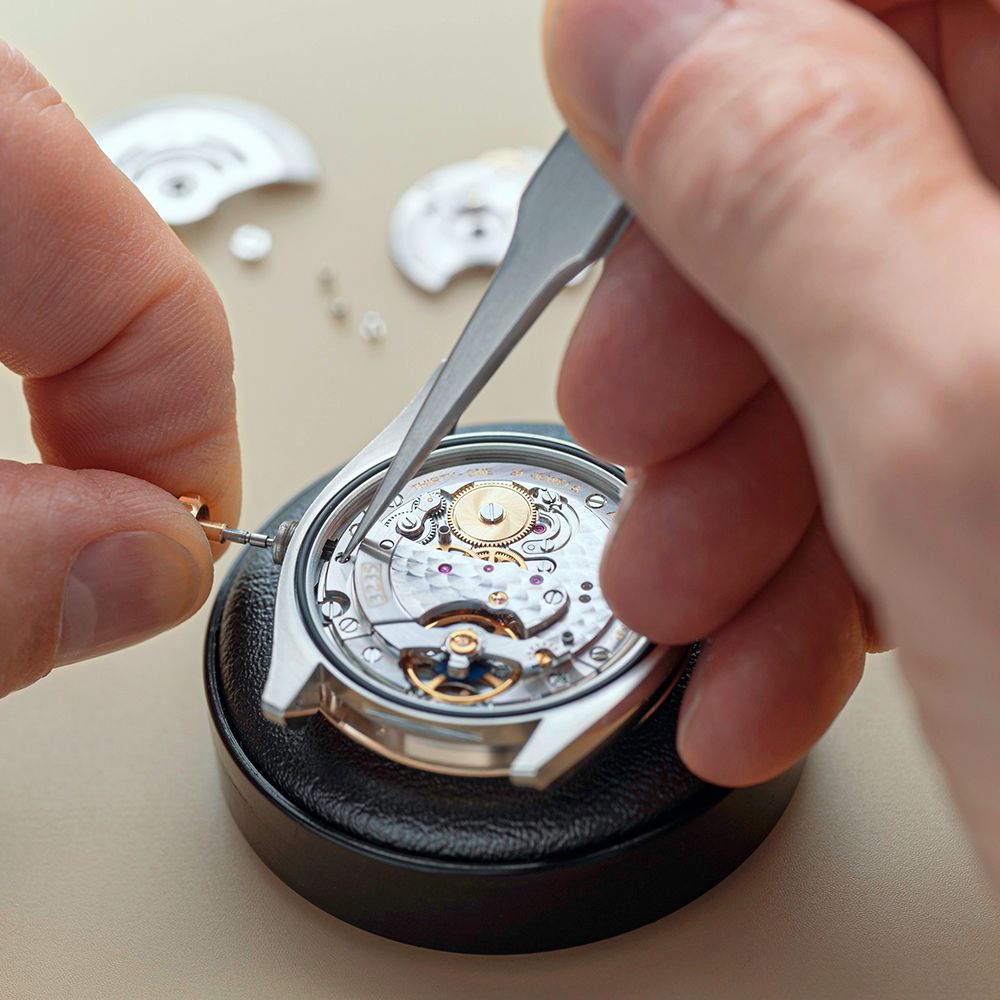Common Questions About Watch Repair and Maintenance
How often should my watch be serviced?
In general, we recommend servicing mechanical watches every 3 to 5 years, while quartz watches can go longer—typically every 5 to 7 years. However, if your watch shows signs of malfunction or damage, it should be repaired immediately to prevent further issues.
What are the typical steps involved in a watch repair?
Typical Watch Repair Process Includes:
- Disassembling the Movement: The watch movement is carefully taken apart into individual components for detailed cleaning and inspection.
- Cleaning the Parts: Specialized cleaning solutions are used to remove dirt, old oil, and dust from the movement components.
- Inspecting Components: Each part is examined for wear or damage. Any defective or worn-out parts are replaced if necessary.
- Lubrication: High-grade lubricants are applied to the movement parts to minimize friction and prolong the watch’s lifespan.
- Reassembling the Movement: After cleaning and lubrication, all components are precisely reassembled to restore proper function.
- Time Regulation: The watch’s accuracy is adjusted and fine-tuned to ensure it keeps precise time.
- Water Resistance Testing: A water resistance test is performed to confirm the watch is properly sealed and protected from moisture.
Should I service my watch through the official brand or a third-party repair center?
During the warranty period, we recommend servicing your watch through the official service center. However, once the warranty has expired, official repair costs are generally higher. In that case, choosing a reputable independent repair shop can be a more cost-effective and reliable option.
What is watch lubrication (oiling)?
Lubrication is a crucial step in watch repair. It involves applying specialized lubricants to the movement components to reduce friction and extend the lifespan of the watch. As the movement operates, friction naturally occurs between parts, which can lead to wear and damage over time. Proper lubrication minimizes this friction, allows smoother operation, and helps preserve the integrity and performance of the watch for years to come.
There's moisture inside my watch—does it need repair?
If you notice condensation or moisture inside your watch, it’s important to address it immediately. This may indicate that your watch has lost its water resistance. Moisture can quickly corrode movement components, leading to rust and serious damage. Please have it inspected and repaired by a professional as soon as possible.
The dial or hands of my watch are discolored—what should I do?
If your watch is a vintage or antique piece, discoloration on the dial or hands due to age is considered normal. To preserve the watch’s originality and value, replacement is generally not recommended. However, if you still wish to replace these parts, it’s advisable to have the work done by the official service center to ensure authenticity and proper handling.
Why is my watch running fast or slow?
There are many reasons why a watch may run fast or slow at times. Common causes include worn movement components, dried-out lubricants, or magnetization. If you notice irregular timekeeping, it’s best to bring your watch to a repair shop for a professional inspection.
Additionally, every watch has an acceptable margin of error. For example, a Rolex certified by the COSC (Contrôle Officiel Suisse des Chronomètres) is expected to maintain a daily deviation of -2/+2 seconds, which translates to a monthly variation of -60/+60 seconds. You can check your watch brand’s official website for specific accuracy standards. If your watch falls within the acceptable range, it is considered normal.
The date window on my watch doesn't change smoothly—does it require service?
If the date window on your watch isn’t switching smoothly, it could be due to wear or jamming of the date wheel or date gear. In this case, it’s recommended to bring your watch to a repair shop for proper inspection and servicing.
My watch has completely stopped—what could be the cause?
There are various reasons why a watch may stop completely or run intermittently. Common causes include dried-out movement lubricants, a weak battery (for quartz watches), damaged gears, or even a broken winding stem. It’s best to take your watch to a professional repair shop for a thorough inspection and diagnosis.
Why is my watch magnetized, and how can it be fixed?
Many everyday items—such as mobile phones, computers, and speakers—emit magnetic fields. If your watch is placed near these devices, components like the gears and hairspring inside the movement may become magnetized, leading to significant timekeeping inaccuracies.
For mild magnetization, a professional demagnetizer can usually resolve the issue. However, if the magnetization causes more serious problems like hairspring sticking, a full disassembly and inspection of each component may be required for proper repair.
How should I care for my watch in daily use?
Regular maintenance can significantly extend the lifespan of your watch. Here are some everyday care tips to keep your timepiece in optimal condition:
- Avoid exposing your watch to water, sweat, and chemicals to prevent corrosion and damage.
- Protect your watch from drops or impacts, as shocks can harm the movement or external components./li>
- Clean the watch case and strap regularly using a soft cloth to remove dust, sweat, and grime.
- Wind your mechanical watch regularly or replace the battery in quartz watches to keep it running smoothly.
- Keep your watch away from magnetic sources such as computers and speakers to prevent magnetization and timing issues.


